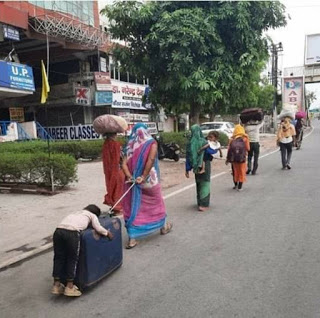Indian Railways 4th largest in the world convenient for travel but greater danger to passengers
India’s state-owned rail network is the main mode of long-distance travel in the country. But safety remains a pressing issue. While trains are convenient for travel and for transporting goods, they have become a greater danger over the years as their speed has increased. Sometimes railroad accidents are caused by human error, but other causes include derailment, explosions on board, and bridge collapses.
Traveling on India’s railway system is one of the cheapest, most authentic, and, with the right advice, one of the most enjoyable ways to see this majestic country. India’s railway is the fourth largest in the world and arguably larger when you consider the amount of passenger travel (between 18 and 25 million people daily) that it ferries throughout the country. Traveling by train in India gives you a window into the daily life of Indian families who you will travel alongside on your journey. Much like the rest of this frenetic, chaotic, beautiful, and sometimes baffling country, it is important to be knowledgeable and prepared for the journey.
According to available data, the first rail accident was on November 5, 1891 when a mail train derailed near Nagpur, killing 10 people and injuring another 35. Latest one is on in the wee hours of Wednesday the June, 25, 2014 when at least four people were killed and 22 were injured — nine of them grievously — after the New Delhi-Dibrugarh Rajdhani Express derailed in Bihar’s Saran district. Tthe mishap took place near Chhapra around 2am on a day Maoists called a bandh in Saran and Tirhut police ranges of northern Bihar beginning zero hour, triggering speculations about the involvement of the extremists who have carried out attacks on trains in the past in certain belts of Bihar and West Bengal. In between, thousands of people have died in rail accidents.
While the reasons behind sated are rail accidents are collisions, derailments, fires and unprotected railway crossings.
Not only the rail accident, any accident can take place anywhere. What to say, even the most advanced technology can’t ensure accident free and hundred percent safe working conditions. At the same time, if the accidents if they are truly ‘accidents’ in a real sense, can’t make any particular person responsible. There is a need of scientific investigation into the accident to find out the real cause and take necessary remedies to avoid recurrence of the same. The investigation should not be in an isolated manner but it should be from overall point of view and the increase in number of accidents in the railways requires such introspection. The railway authorities are supposed to ensure safe and comfortable travel of passengers. Technology alone can’t ensure safety. It is ultimately human intervention and a human approach, which can ensure safety.
Not only the rail accident, any accident can take place anywhere. What to say, even the most advanced technology can’t ensure accident free and hundred percent safe working conditions. At the same time, if the accidents if they are truly ‘accidents’ in a real sense, can’t make any particular person responsible. There is a need of scientific investigation into the accident to find out the real cause and take necessary remedies to avoid recurrence of the same. The investigation should not be in an isolated manner but it should be from overall point of view and the increase in number of accidents in the railways requires such introspection. The railway authorities are supposed to ensure safe and comfortable travel of passengers. Technology alone can’t ensure safety. It is ultimately human intervention and a human approach, which can ensure safety.
It is seen that normally the reason cited by the railway officials, including the Ministers, is sabotage by militant groups. In spite of the fact that it is proven on many occasions that there was no sabotage the immediate response of the Minister was always only sabotage. Since this is a convenient method to absolve them of responsibility and also to discredit the militants, it is taken even when it is not possible and they go so far as to blame their own staff.
It is a matter of record that a white paper on Indian Railway safety issued by the Ministry of Railways states that 75 percent of the accidents on the system are due to derailments, which accounts for 14 percent of the deaths in railway accidents. Second most important reason cited in that paper is the accidents at unmanned level crossings, which accounts for 12 percent of accidents but 37 percent of deaths. The Railway officials concluded that ‘human failure’ is the reason for most of the accidents.
Frankly speaking, it now appears that railway accidents have become a regular phenomenon. Train accidents in India have killed some 1,220 people over the past five years. The high frequency of these accidents has made the authorities go on the defensive. The reasons and remedies they cite not only shows their myopic view but also their irresponsible behaviour. It is not understood when the authorities are so sure that derailment and human failure are the main culprits, then as to why they don’t pay more attention to these problems? Thus, only increasing expenditure on maintenance and safety measures could decrease the rail accidents.





